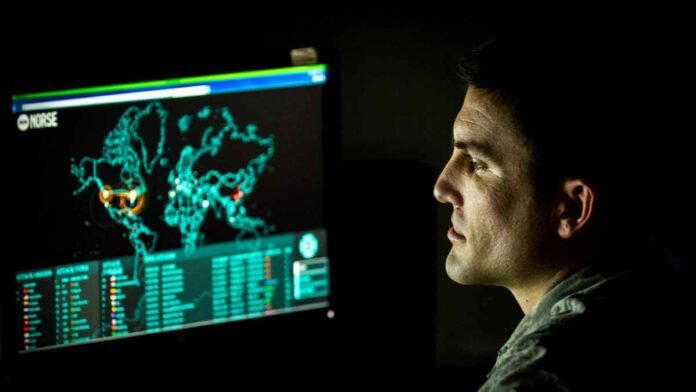According to a new report by the Special Competitive Studies Project (SCSP), the US military will have to soon develop a new military-technological competitive strategy.
The US Department of Defense (DoD) must find any gaps in the capabilities necessary for its smooth operation. To bridge the gap, the US military will have to soon develop a new military-technological competitive strategy.
The US established the First Offset Strategy which involved developing the equipment and training the troops needed to maintain bomber aircraft in the air at all times, giving subordinate officers the authority to man nuclear silos, and creating the capacity to keep watch on land, at sea, and underneath the earth’s surface. By the middle of the 1980s, the Soviet Union understood that The Third Offset, which was probably the Third Offset envisioned by former Deputy Defense Secretary Robert O., had left it without a realistic path to military success in Europe. The the US Department of Defense (DoD) was being moved away from counterterrorism and toward a technology-focused strategy for great power competition and conflict. However, technology is developing at an unprecedented rate, due to which many old capacities are becoming obsolete.
The US Department of Defense (DoD) must find any gaps in the capabilities necessary for its smooth operation. To bridge the gap, the US military will have to soon develop a new military-technological competitive strategy. Adopting adaptive communication systems, like NASA’s cognitive communications, is one way to achieve this. These systems employ decision-making algorithms to figure out the best route for signals to travel in dynamic, diverse networks.
Using adaptive communications to protect C2 systems from PLA disruption would increase US power projection. To manage and adjust to longer-term difficulties that may arise in the changing security environment, the US Department of Defense (DoD) need a new force architecture that is technologically enabled. Equipment for the Future Joint Force must be modular, interoperable, software-defined, and, if possible, low-cost by design. The Department of Defense should create and field a low-cost, software-centric collaborative combat aircraft (CCA) to hasten the delivery of critical capability while continuously enhancing the efficiency of the platforms through software and other system updates. This will help the Joint Force move toward this characteristic. The ramifications might be severe if we don’t act soon to deploy next-generation capabilities and rebuild the combined Force. To face this generational challenge and be the driving force behind the adjustments required to protect the sort of world we currently live in, our political and defense leadership as well as the American public must once more rise to the occasion.
The US Department of Defense (DoD) must find any gaps in the capabilities necessary for its smooth operation. To bridge the gap, the US military will have to soon develop a new military-technological competitive strategy.
According to a new report by the Special Competitive Studies Project (SCSP), the US military will have to soon develop a new military-technological competitive strategy.
The US established the First Offset Strategy which involved developing the equipment and training the troops needed to maintain bomber aircraft in the air at all times, giving subordinate officers the authority to man nuclear silos, and creating the capacity to keep watch on land, at sea, and underneath the earth’s surface. By the middle of the 1980s, the Soviet Union understood that The Third Offset, which was probably the Third Offset envisioned by former Deputy Defense Secretary Robert O., had left it without a realistic path to military success in Europe.
The US Department of Defense (DoD) was being moved away from counterterrorism and toward a technology-focused strategy for great power competition and conflict. However, technology is developing at an unprecedented rate, due to which many old capacities are becoming obsolete.
The US Department of Defense (DoD) must find any gaps in the capabilities necessary for its smooth operation. To bridge the gap, the US military will have to soon develop a new military-technological competitive strategy. Adopting adaptive communication systems, like NASA’s cognitive communications, is one way to achieve this. These systems employ decision-making algorithms to figure out the best route for signals to travel in dynamic, diverse networks.
Using adaptive communications to protect C2 systems from PLA disruption would increase US power projection. To manage and adjust to longer-term difficulties that may arise in the changing security environment, the US Department of Defense (DoD) need a new force architecture that is technologically enabled. Equipment for the Future Joint Force must be modular, interoperable, software-defined, and, if possible, low-cost by design.
The US Department of Defense (DoD) should create and field a low-cost, software-centric collaborative combat aircraft (CCA) to hasten the delivery of critical capability while continuously enhancing the efficiency of the platforms through software and other system updates. This will help the Joint Force move toward this characteristic. The ramifications might be severe if we don’t act soon to deploy next-generation capabilities and rebuild the combined Force. To face this generational challenge and be the driving force behind the adjustments required to protect the sort of world we currently live in, our political and defense leadership as well as the American public must once more rise to the occasion.



